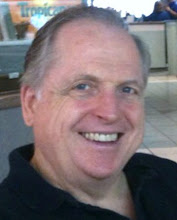Change requires learning and learning generates change. Education is a tool that makes the process flow more smoothly.
(Now aren't you glad you looked at this blog today?)
A common definition of insanity is doing the same thing over and over and expecting different results.
The relationship between change, learning, and education is dynamic and synergistic. Each influences the other. There are similar steps and stages for individuals and organizations and the details of what happens in those steps and stages are different. Visit http://joelmonty.wikispaces.com/meta-models and look at two Meta-models—the Personal Performance Change Curve and the Organizational Performance Change Curve for details.
Change is not easy. Even when we know that something is good for us, it's hard to do it. I've lost weight using Jenny Craig's meals and I know they work. Over the summer I have "supplemented" the meals too much and have gained back a few pounds. I know better and know that I can trim the supplements and get back on my weight loss program. I'll do that "tomorrow." For me, at least I know what to do and what to change to. Jenny's meals have worked for me in the past and I'm still on the program.
In business and in K-12 education change is difficult as well. It is often difficult to decide what to change and what to change to. To make matters worse, people keep coming up with new technologies or fads or "sure fire techniques" that will "make it happen now." (Only these innovations fail to produce the results intended--at least for the people working to implement them. Why do they fail?
Many times the innovation or intervention could be successful if the people putting them into practice learned what they really need to know to make the innovation or intervention successful. That learning requires an investment of time and energy and a willingness to accept that there is something more to be learned. While some people who are committed to the change are willing to do the learning required, many others are not and that is often the cause of failure to change.
In education, research I've worked with this summer shows that many high school graduates in the USA read at a third to sixth grade level (instead of a 12th grade level or higher). I've found that statistic from research 13 years ago and found that to be true in my 7th and 8th grade classrooms this Spring. There have been lots of interventions and innovations over the past 13 years--yet the results of the research indicate much the same condition. What hasn't worked?
Education (in terms of the larger sense of the process of education rather than the sense of education as a business) can help individuals and organizations move through the steps and stages of the Change Process to achieve the change goals. In most cases—in business and in the education industry—education for the shared vision of change has not taken place. Most education being provided today is more tactical than strategic and the people receiving the training often do not find much value—in the proposed change or in the training they received to implement it. (This was feedback I found both in business and in education all over the world.)
Part of what needs to happen is to have an enlarged vision of the change—beyond just the intervention being proposed. People and organizations need to be prepared for the change, to learn what they need to in order to move through the stages of awareness, acceptance, and action.
A facilitator with a rich background in education and learning—(of course this is a plug: it’s my blog, after all)—can help guide the process so that more holistic learning and change can take place.
Another rich resource for helping organizations learn and change is the process of Action Learning initiated by Reg Revans out of the United Kingdom. Visit http://www.ifal-usa.org/ for more information.) I use both Action Learning and Action Research (pioneered by Kurt Lewin in the 1940s) as part of the tools in my toolkit—along with some of the work of Dr. Eliyahu M. Goldratt (author of The Goal and Critical Chain, among other works).
Thursday, August 13, 2009
Subscribe to:
Post Comments (Atom)




No comments:
Post a Comment
Thanks for your comments. They will appear on the blog shortly.